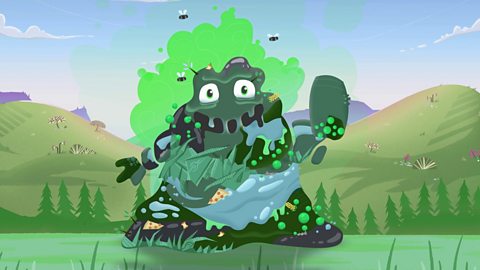What is energy?
Energy is in everything around us. Without energy nothing would ever change, move, make a sound or even be visible.
In this article you can learn about:
- Where energy comes from
- What conservation of energy is
- What useful and wasted energy are
- What the main types of energy are
This resource is suitable for energy and sustainability topics for primary school learners.
Video - Where does energy come from?
Find out where energy comes from and what the main types of energy are in this short video.
What exactly is energy?
Well, energy is in everything:
in the sunlight, in the wind chimes, and even in Milo here.
Isn't that right, Milo?
…Milo?
Aw, he's always sleepy after a walk… but the potential is there.
See, energy can't be created or destroyed. It's only ever transferred.
Potential energy is stored by an object because of its position or state.
This roller coaster has potential energy because it's high up and ready to fall!
Potential energy transforms to kinetic energy on the way down.
An object has kinetic energy when it's moving which turns back into potential energy at the top…
[The carriage moves up and down the rollercoaster ride]
…then kinetic, then potential, then kinetic…
then - how is he still asleep?!
The Sun is the biggest source of energy on our planet.
Heat energy from the Sun is absorbed by everything on Earth, including us.
While light energy from the sun makes things visible (if you've got your eyes open).
People have invented ways to generate heat and light energy too.
These solar panels take light energy from the sun and convert it into electrical energy.
This electrical energy is transferred to your home where it powers your bedside lamp, your toaster and your TV.
[TV plays]
Can you hear that, Milo?
That's another type of energy: sound energy.
[Milo snores]
Unbelievable…
The light and sound from your TV are examples of useful energy but your telly also gives out heat, which isn't useful at all.
So we call it wasted energy.
Nuclear energy and chemical energy are other types of potential energy.
Potential energy is stored in the atoms that everything is made of or in the bonds that hold atoms together.
But something needs to happen to release it.
Take gas, for example. That contains chemical energy.
And when the hob is lit, the gas burns, releasing its chemical energy as heat and light energy.
Hang on a minute!
I think that's Milo woken up!
You see, food is where our body gets the chemical energy it needs to function.
Bon appetit, lads!
Where does energy come from?
All the different forms of energy can be traced back to the Big Bang.
Scientists believe that everything in the Universe was once packed into a tiny point. 13.8 billion years ago, the Big Bang was when this tiny point flew apart in a massive explosion, spreading matter and energy out in all directions and creating the Universe.
Matter is ‘stuff’, anything that has mass and takes up space. For example:
- you
- a ball
- the air around you
- the Earth, Moon and Sun.
Energy is the ability of matter to change or do something. For example
- we use energy to breathe or throw a ball
- the ball has energy as it moves through the air
- energy from the Sun gives out light that lets us see the ball
All of this energy can be traced back to the Big Bang.
What is the law of conservation of energy?
There is a scientific rule called the law of conservation of energy. It explains that:
Energy cannot be created or destroyed, only transferred between different forms and different objects.
For example:
- Light energy from the Sun is transferred into electrical energy (another form of energy) by a solar panel.
- Heat energy from a hot water bottle is transfers to a bed (another object).
The Sun is the Earth’s main source of energy. Find out more about the power of the Sun here: What is the Sun?
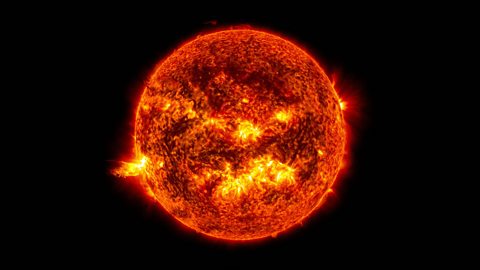
Image caption, The Sun is the Earth’s main source of energy
Heat from the Sun warms the Earth and all the things on it. Light from the sun can be used to generate electricity. This is known as solar power and is a form of renewable energy. (Dennis Hallinan / Alamy Stock Photo)
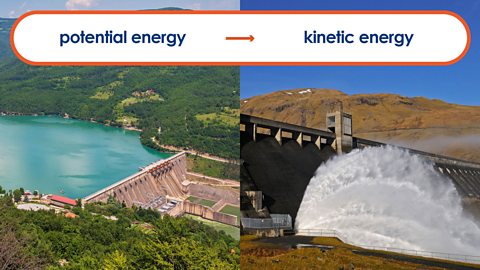
Image caption, Energy cannot be made or destroyed. It can only be transferred from one form to another, or from one object to another.
Water held behind a dam stores potential energy. When the dam is opened the potential energy is transferred to kinetic energy while the water is moving. The kinetic energy of flowing water can be transferred to a spinning turbine. This kinetic energy can then be transferred to electrical energy in a generator.
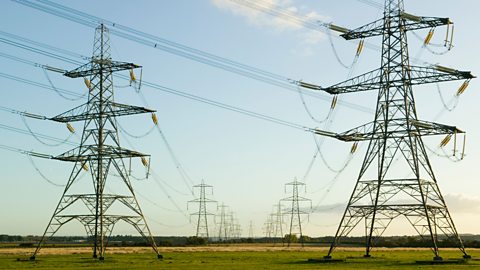
Image caption, Different energy types can be transferred to electrical energy
Lots of dfferent renewable energy sources can be used to transfer one type of energy into electrical energy. This can then be transported through power cables to our homes, offices and other buildings. (David Robertson / Alamy Stock Photo)
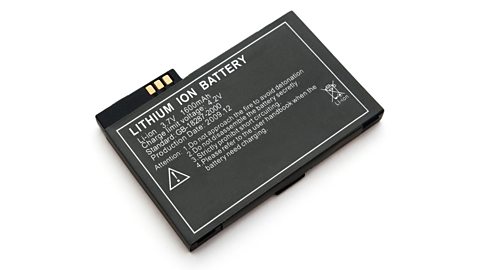
Image caption, We rely on chemical energy (in battery form) to power our portable electronic devices
Batteries store chemical energy which can be transferred to electrical energy. As we use more and more electronic devices (like phones, laptops and cars) the more batteries we will need. Scientists are trying to invent more sustainable types of battery. (Zoonar GmbH / Alamy Stock Photo)
1 of 4
Useful and wasted energy
In daily life, we can talk about energy transfers in terms of useful energy, which is used for something, and wasted energy, which is lost in some way.
For example, a hairdryer transfers electrical energy into two forms of useful energy:
- Heat energy that warms the air.
- Kinetic energy that moves this hot air.
These are useful energy because they are the things that dry your hair.
The hairdryer transfers some electrical energy into wasted energy:
- Heat energy that is lost to your surroundings.
- Sound energy that makes the hairdryer noisy.
These are wasted energy because they don’t help dry your hair.
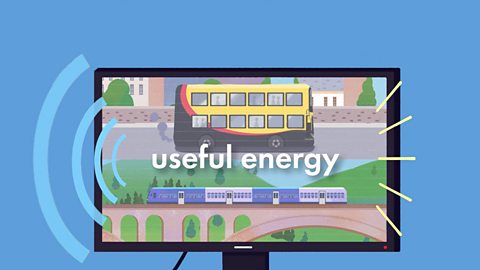
Image caption, Useful energy
The light and sound from your TV are examples of useful energy.
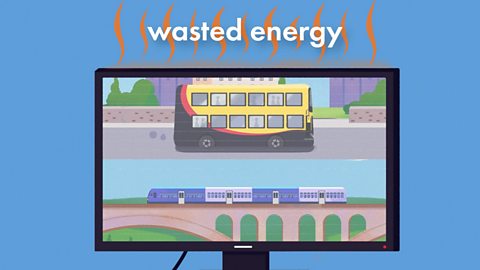
Image caption, Wasted energy
Your TV also gives out heat, which isn't useful. Because of this we call it wasted energy.
1 of 2
The different types of energy
What is potential energy?
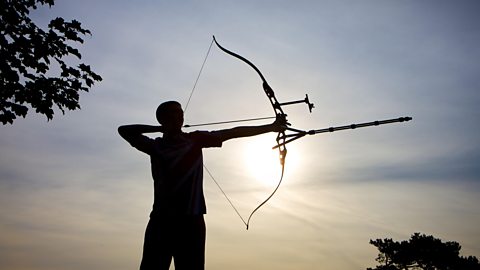
Potential energy is energy stored because of its position or state. For example:
An elastic band that has been stretched tight has the potential to snap back to its relaxed position.
A skateboarder at the top of a ramp has the potential to roll down the ramp because of gravity.

What is chemical energy?

Chemical energy is a type of stored energy. It is stored in the bonds that hold atomTiny particles that everything in the universe is made from. Different atoms make up different materials, called elements. and moleculeTwo or more atoms which are strongly bonded together. The smallest particle of a substance that has all of the physical and chemical properties of that substance. together. It is released and can be used when these bonds break. For example
- Chemical energy stored in food is released when we digest it and can be used by our bodies
- Chemical energy stored in fuels like gas can be used to heat our homes or cook food.
- Chemical energy stored in batteries can be used to generate electricity for mobile phones or remote controls.
Learn more about food and the chemical energy it gives us when we digest it:
- Find out how food gives our body fuel: Food as fuel
- Find out what our human body does with the food that we eat: How do humans digest food?

What is kinetic energy?

Kinetic energy is the energy of movement. An object has kinetic energy when it is moving. For example:
- When a football player kicks the ball, the ball has kinetic energy while it moves through the air.
- A goalie has kinetic energy while she dives to catch the ball.

What is heat energy?

Heat energy is the flow of energy from something warmer to something cooler. For example:
- Heat energy radiated by the Sun warms the Earth and all the living things and objects on it.
- Heat energy from a cup of tea is conducted through the cup and warms your hands.
- Heat energy from a radiator warms the air around it which rises up and moves around, heating the room. This is called convection.

What is electrical energy?
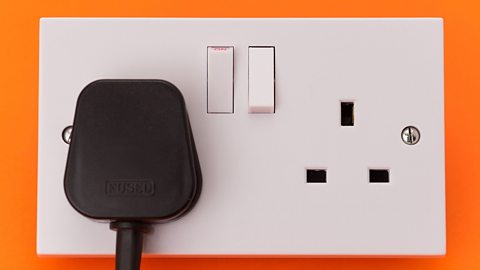
Electrical energy comes from the movement of electrical charge. Electrical energy is useful because it can be transferred into lots of different types of energy. For example:
- Electrical energy can be transferred to heat energy to boil a kettle.
- Electrical energy can be transferred to light energy in a lightbulb.
- Electrical energy can be transferred to kinetic energy to move an electric car.
We can also use lots of different forms of energy to generate electrical energy. For example:
- Solar panels transfer light energy to electrical energy.
- Wind turbines transfer kinetic energy to electrical energy.
- Batteries transfer chemical energy to electrical energy.

What is light energy?
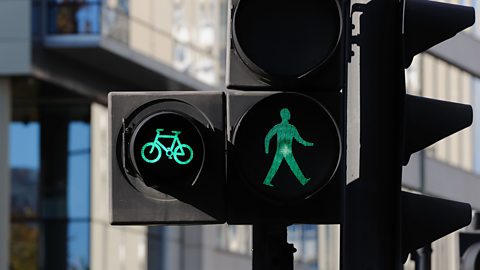
We need light energy to see. Light energy is reflected off objects and into our eyes. When this energy hits the back of our eyes, signals are sent to the brain, which then works out the size, shape, position and colour of whatever the light has reflected off.
Our main source of light is the Sun. During the day, light energy from the Sun lights up the side of the planet facing it. At night, we often see the Sun's light energy reflected off the surface of the moon. We can also see light energy from stars that are billions or trillions of miles away.
We have lots of ways to make light ourselves:
- Candles change chemical energy to light energy by burning wax as a fuel.
- Lightbulbs change electrical energy to light energy.
- TVs, phones and tablets change electrical energy to light energy that lights up a screen.
- Glowsticks change chemical energy to light energy by mixing different chemicals together.

What is sound energy?

Sound energy is energy which can be heard by living things. It is the movement of energy through a substance such as water or air and is transmitted in waves. Sound energy is caused by vibrations in solids, liquids or gases. Humans and animals have used this to communicate, but many types of energy also produce sound energy. For example:
- The heat energy of a burning fire produces sound energy that we hear as crackling sounds.
- The kinetic energy of a guitar string vibrating produces sound energy.
- The electrical energy of lightning makes the air around it expand producing sound energy that we hear as thunder.


Key words about energy
Sorry, something went wrongCheck your connection, refresh the page and try again. - The name given to an explosion which happened 13.8 billion years ago which created all matter in our universe.
Sorry, something went wrongCheck your connection, refresh the page and try again. - Anything that has mass and takes up space.
Sorry, something went wrongCheck your connection, refresh the page and try again. - The ability of matter to change or do something.
Sorry, something went wrongCheck your connection, refresh the page and try again. - A scientific law that explains that energy can be transferred but not created or destroyed.
Test your knowledge
Quiz
Challenge
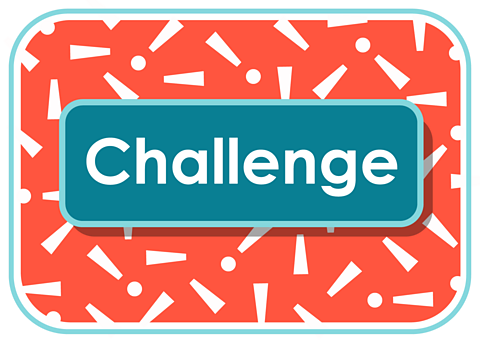
Examples of energy transferring
Here are some examples of energy transferring between different objects and forms of energy that we have learned about:
• The Sun’s heat and light energy is transferred into chemical energy by an apple tree to grow apples.
• A person eats the apple and the chemical energy of the food is transferred to the person's body.
• The chemical energy stored in the person's body is transferred to kinetic energy when the person moves around…
Find some other examples of energy transferring between different forms and objects like the examples above.
More on Sustainability
Find out more by working through a topic
- count13 of 28
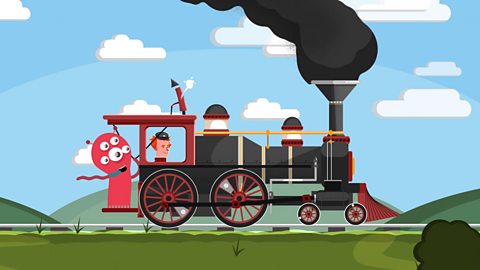
- count14 of 28
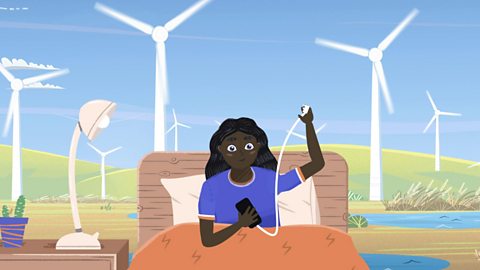
- count15 of 28
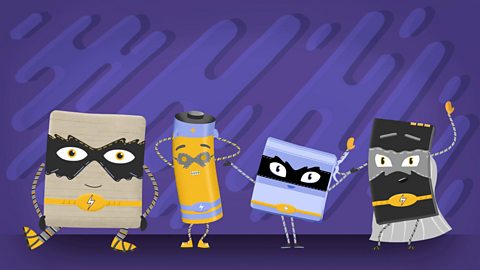
- count16 of 28
